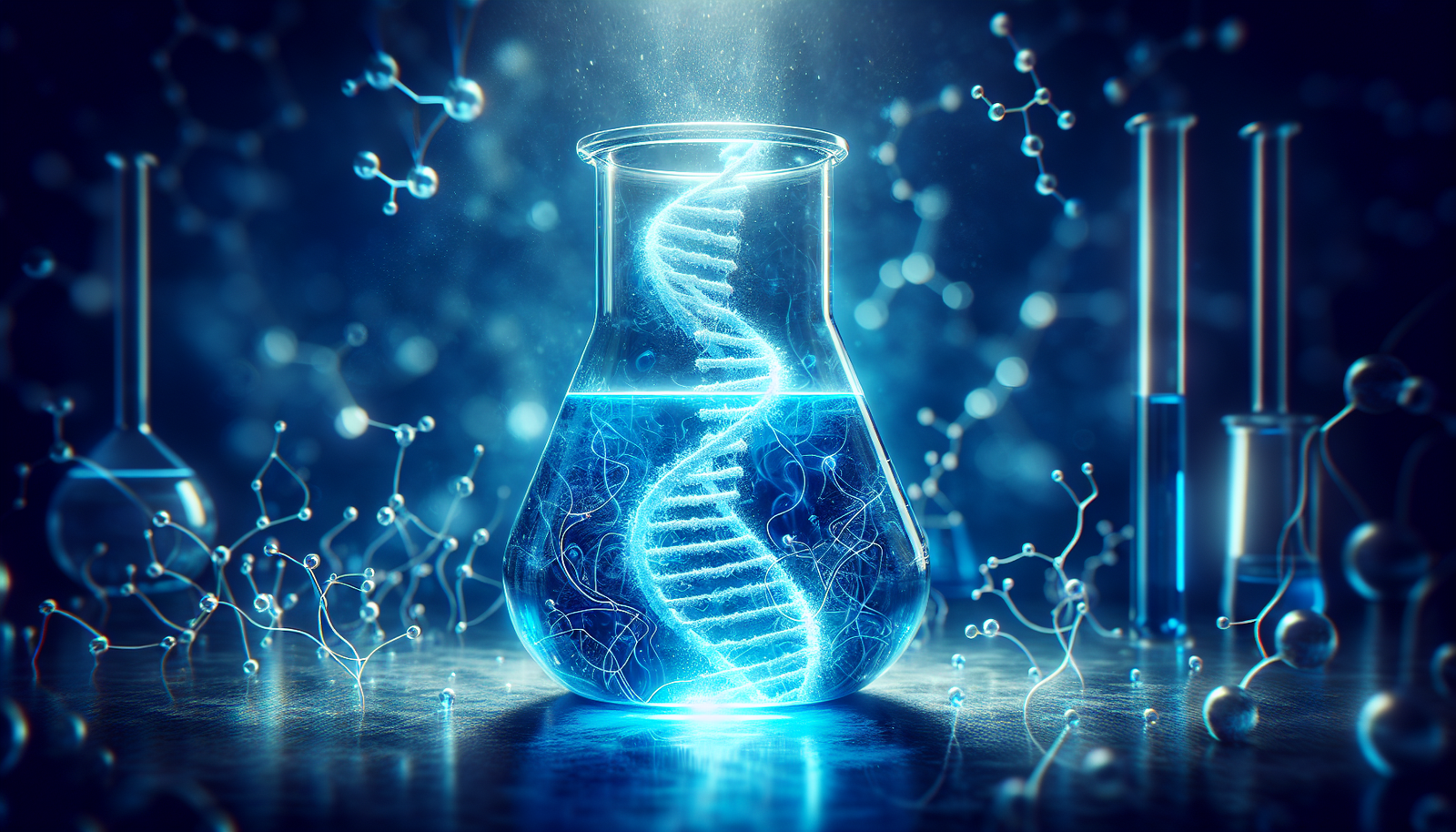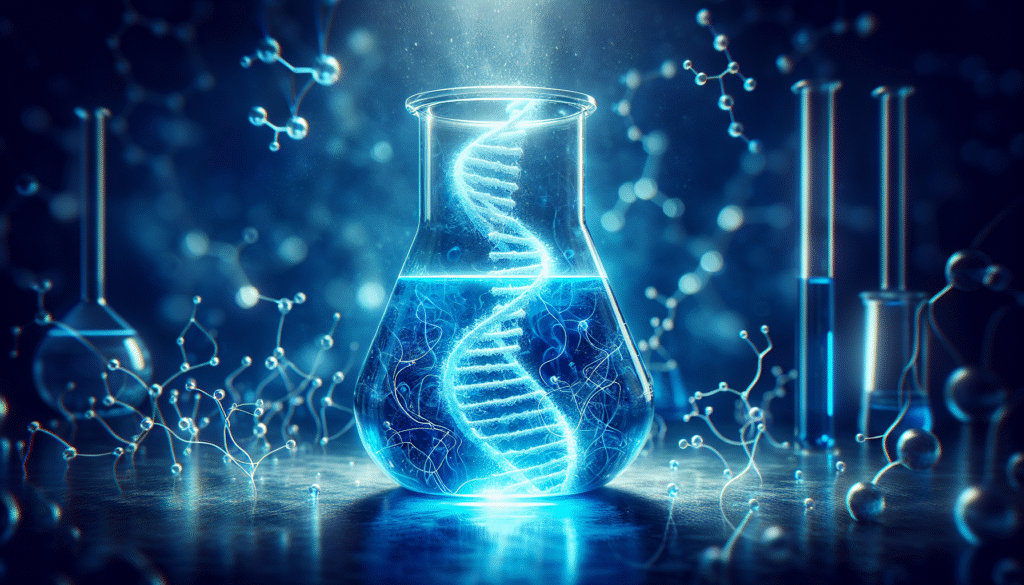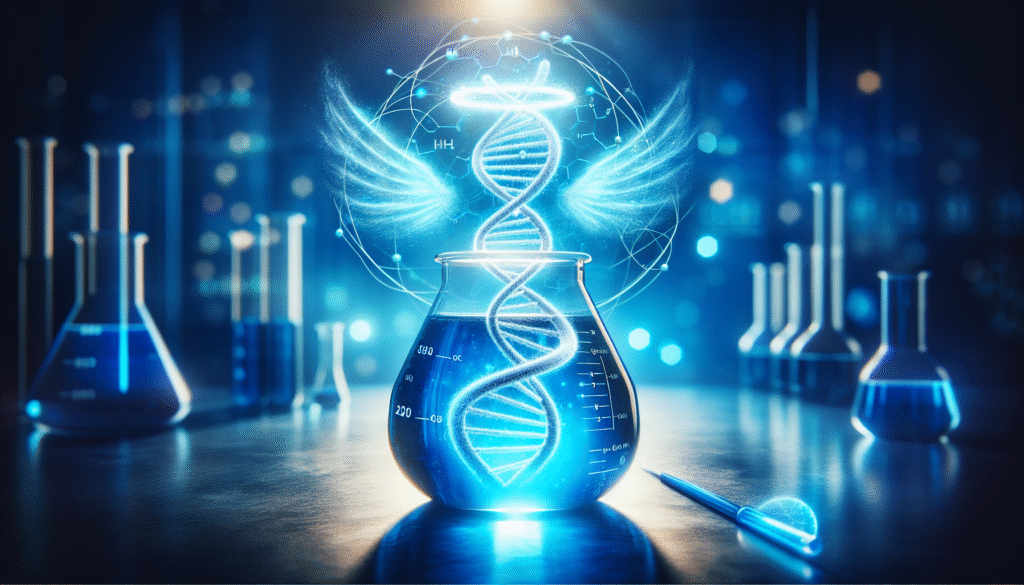
Have you ever wondered about the ways in which certain compounds can influence cellular processes, especially those as critical as DNA repair? Methylene blue, a compound with a storied history, has emerged as a significant player in this realm of molecular biology. In this article, you will gain insight into how methylene blue affects DNA repair mechanisms, potentially paving the way for innovative treatments and a better understanding of cellular health.
The Role of DNA in Cellular Function
DNA, or deoxyribonucleic acid, serves as the blueprint for life. Each of your cells contains DNA that dictates everything from cellular structure to the processes necessary for survival. Every time your cells divide, DNA must be accurately copied. However, environmental stresses and normal metabolic processes can introduce damage to this crucial molecule.
Understanding DNA Repair
When DNA sustains damage, it can lead to mutations, cancer, or cell death if unaddressed. That’s where DNA repair mechanisms come into play. Your cells are equipped with various pathways to detect and fix DNA damage, ensuring cellular integrity. These mechanisms include:
-
Base Excision Repair (BER): This pathway addresses small, non-helix-distorting DNA lesions. It removes damaged bases and replaces them.
-
Nucleotide Excision Repair (NER): NER deals with bulkier DNA adducts that distort the double helix. It removes a short single-stranded DNA segment containing the lesion.
-
Mismatch Repair (MMR): This system corrects base-pairing mismatches that can occur during DNA replication.
-
Double-Strand Break Repair (DSBR): This pathway is crucial for repairing severe DNA damage. It utilizes mechanisms like homologous recombination and non-homologous end joining.
An understanding of these mechanisms is vital, as they underpin many cellular functions and health conditions.
Introduction to Methylene Blue
Methylene blue is a chemical compound that has garnered attention for its potential therapeutic effects. Originally developed as a dye in the late 19th century, it has found applications in various fields, from medicine to biology.
Chemical Properties
As a phenothiazine derivative, methylene blue possesses specific chemical properties that make it unique. Its redox capabilities allow it to act as an electron donor or acceptor in biological systems. This characteristic is pivotal in understanding how methylene blue influences cellular functions, including DNA repair.
Historical Uses
Methylene blue has a long history, initially used to treat malaria and later, as a medication for other conditions, such as methemoglobinemia. Its historical significance reflects a wider acceptance of its possible benefits in modern scientific research.

Methylene Blue and Reactive Oxygen Species (ROS)
A critical aspect of how methylene blue may influence DNA repair lies in its interaction with reactive oxygen species (ROS). ROS are naturally occurring byproducts of cellular metabolism. While they serve essential roles in signaling and homeostasis, excessive ROS can lead to oxidative stress, wreaking havoc on cellular components, including DNA.
Mechanisms of ROS Induction
The overproduction of ROS can arise from various sources, including:
- Environmental toxins
- Radiation exposure
- Inflammation
- Metabolic dysfunction
Your cells have developed antioxidant defense systems to counteract ROS. However, when these systems are overwhelmed, oxidative damage can accumulate.
Methylene Blue as an Antioxidant
Research indicates that methylene blue demonstrates antioxidant properties, acting to neutralize ROS. By mitigating oxidative stress, methylene blue can reduce the burden on your cells, providing a more favorable environment for DNA repair processes to proceed.
Influence of Methylene Blue on DNA Repair Mechanisms
Various studies are currently examining the intersection of methylene blue’s properties and DNA repair mechanisms. Below, we will discuss a few pivotal findings that illustrate this relationship.
Enhancing Base Excision Repair (BER)
Recent research indicates that methylene blue may enhance the efficiency of the base excision repair pathway. By stabilizing the DNA structure or influencing key enzymes in the repair process, methylene blue appears to assist in the removal of damaged nucleobases.
- Key Enzymes Affected by Methylene Blue
- DNA glycosylases: These enzymes recognize and remove damaged bases. Methylene bluemay enhance their activity.
- Polymerases: Following base removal, polymerases fill in gaps; increased efficiency here can also be attributed to methylene blue.
Influence on Double-Strand Break Repair (DSBR)
Double-strand breaks are among the most lethal forms of DNA damage. Methylene blue has demonstrated potential benefits in this regard.
-
Homologous Recombination (HR)
- Studies indicate that methylene blue may facilitate homologous recombination by stabilizing intermediate structures formed during repair.
-
Non-Homologous End Joining (NHEJ)
- Methylene blue’s modulation of certain cellular pathways can enhance the NHEJ efficiency, crucial for repairing double-strand breaks when homologous sequences are not available.
Modulating Cellular Signaling Pathways
Another fascinating aspect of methylene blue’s influence on DNA repair involves its impact on cellular signaling pathways. These pathways can determine whether a cell undergoes repair or apoptosis in the face of overwhelming damage.
-
p53 Pathway
- The p53 protein plays a pivotal role in cellular stress response, including DNA repair. Methylene blue may affect p53 activity, thus influencing repair decisions.
-
ATM and ATR Kinases
- These kinases are crucial for recognizing DNA damage. Methylene blue’s influence on upstream signaling could modulate their activation and downstream effects.

Therapeutic Implications of Methylene Blue in DNA Repair
Understanding how methylene blue influences DNA repair mechanisms opens up avenues for therapeutic applications. Its antioxidant properties combined with its effects on DNA repair could position it as a candidate in several contexts.
Cancer Therapy
One of the most promising applications lies in oncology. Cancer cells often exhibit dysfunctional DNA repair pathways, leading to genomic instability. By incorporating methylene blue into treatment regimens, you may enhance the efficacy of traditional therapies, as it can improve or modulate the DNA repair capacity of both normal and cancerous cells.
Neurodegenerative Diseases
Neurodegenerative conditions often involve oxidative stress and impaired DNA repair. Methylene blue’s ability to mitigate oxidative damage and enhance repair processes could offer therapeutic pathways for diseases such as Alzheimer’s and Parkinson’s.
Age-Related Conditions
Aging is associated with increased oxidative stress and diminished DNA repair capacity. Methylene blue’s properties may offer potential longevity-enhancing benefits by supporting cellular integrity and function.
Research Directions and Future Studies
As with any emerging area of research, there remain unanswered questions regarding methylene blue’s full potential in influencing DNA repair mechanisms.
Clinical Trials and Observational Studies
Future studies will need to confirm laboratory findings in clinical settings. Trials designed to measure the efficacy of methylene blue in human subjects could offer critical insights.
Molecular Mechanisms
Understanding the molecular mechanisms behind methylene blue’s effects at a deeper level will be crucial. Targeting specific pathways and understanding the interplay between various cellular processes will be fundamental.
Long-Term Effects and Safety
While methylene blue appears to offer benefits, long-term safety assessments must be conducted. Understanding any potential toxicity or side effects will be essential before widespread clinical application.
Conclusion
Methylene blue represents a compelling area of research at the intersection of chemistry, biology, and medicine. Its influence on DNA repair mechanisms opens up exciting possibilities for therapeutic interventions across a range of health conditions. By enhancing our understanding of how compounds like methylene blue can affect cellular functions, you contribute to the advancement of science and medicine, facilitating improved health outcomes and longevity.
As enthusiasm around methylene blue continues to grow, careful research and structured studies can illuminate its full potential, offering hope for innovative treatments and a brighter future in the realm of cellular health.